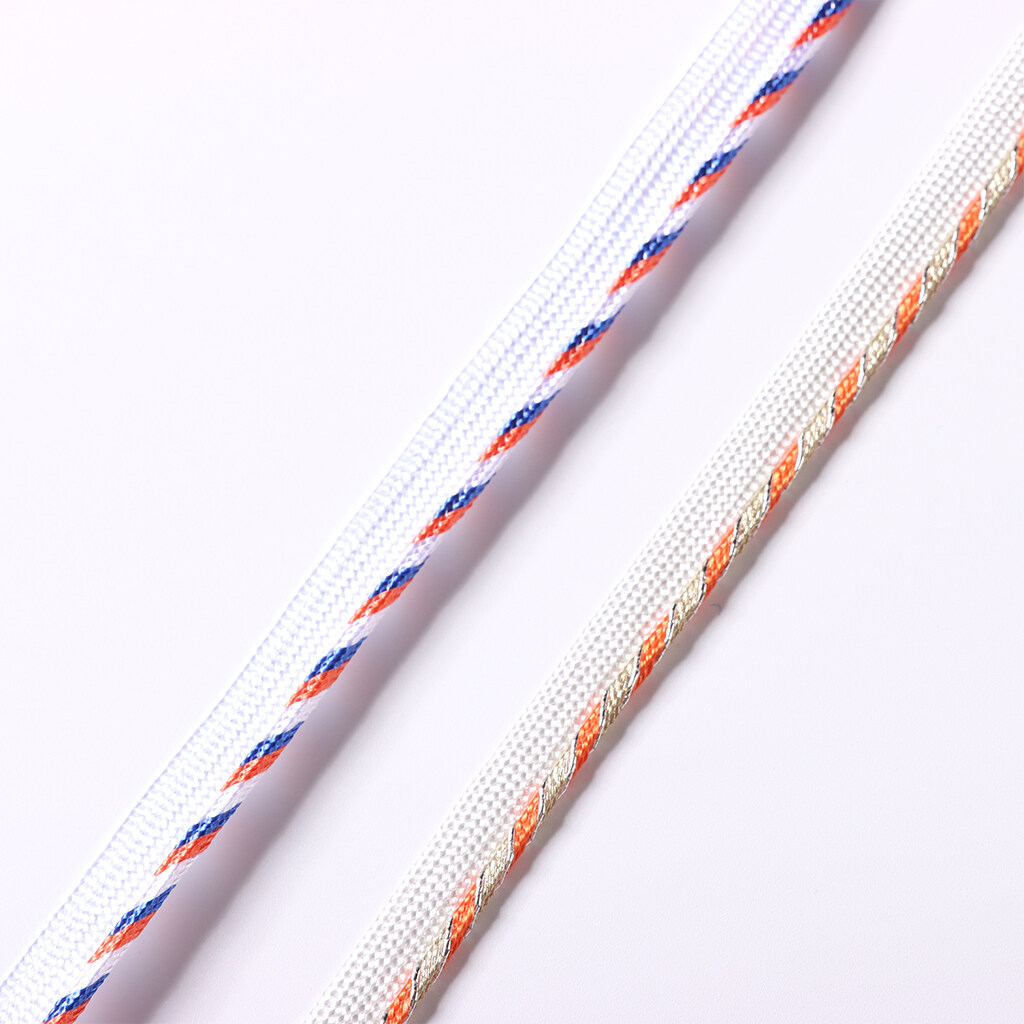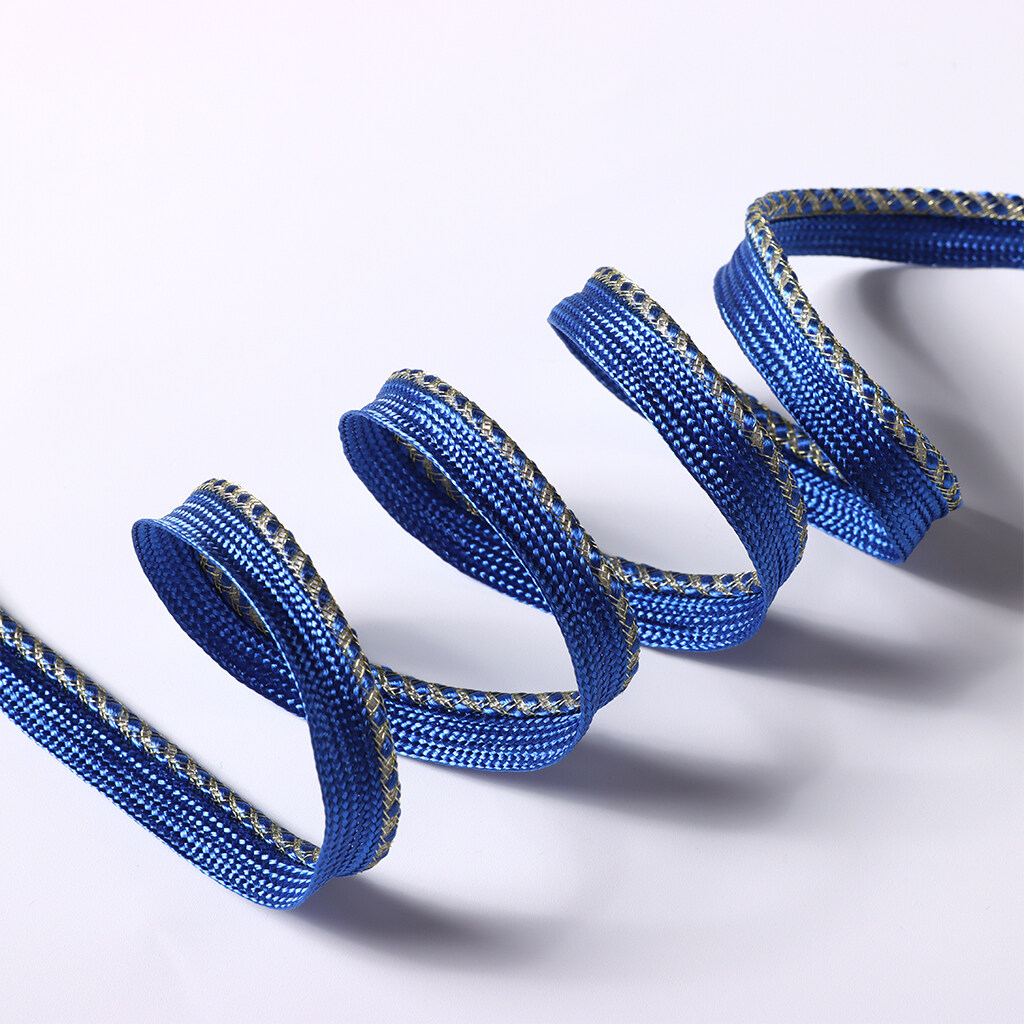Email cannot be empty
Password cannot be empty
Email format error
Email cannot be empty
Email already exists
6-20 characters(letters plus numbers only)
The password is inconsistent
Email format error
Email cannot be empty
Email does not exist
6-20 characters(letters plus numbers only)
The password is inconsistent


Sewing enthusiasts and professionals alike understand the significance of achieving clean and durable seams. One technique that stands out for its versatility and functionality is binding seams with bias tape. This method not only adds a polished look to your projects but also reinforces the fabric edges, ensuring longevity. In this comprehensive guide, we'll delve deep into the intricacies of this technique, exploring its applications, variations, and step-by-step instructions for flawless execution.
Understanding Bias Tape
1. What is Bias Tape?
Bias tape, renowned for its versatility, is a narrow strip of fabric meticulously cut at a 45-degree angle to the fabric's grain. This unique diagonal cutting technique endows bias tape with exceptional elasticity and flexibility. Unlike straight-grain fabric strips, bias tape has the remarkable ability to conform smoothly to curves and edges, making it an indispensable tool for seam finishing, hemming, and edging.
2. The Science Behind Bias Tape
The diagonal orientation of bias tape against the fabric's grain allows it to stretch and bend without distorting or puckering the material. This characteristic makes it perfect for intricate or curved designs, offering a seamless finish and impeccable drape.
3. Types of Bias Tape
Cotton Bias Tape: Known for its natural breathability and durability, cotton bias tape is a popular choice for various sewing projects. It's absorbent and easy to work with, ensuring a comfortable finish.
Polyester Bias Tape: Polyester offers excellent color retention and resistance to wrinkles and shrinking. Its strength makes it suitable for heavy-duty applications and projects that require long-lasting durability.
Satin Bias Tape: Satin bias tape adds an elegant touch to garments and projects. Its glossy surface and smooth texture make it ideal for formal wear, lingerie, and decorative accents.
Grosgrain Bias Tape: Recognizable by its ribbed texture, grosgrain bias tape provides added grip and texture to finished edges. It's commonly used for heavier fabrics and projects where a bit of texture is desired.
4. Importance of Quality in Bias Tape Selection
While exploring options such as cheap grosgrain ribbon wholesale or custom satin woven labels might be enticing, it's pivotal to prioritize quality. High-quality bias tape ensures a professional finish, resilience against fraying, and longevity in your finished projects. Opting for premium materials contributes significantly to the overall look and durability of your sewing endeavors.
5. Customization and Specialty Bias Tapes
Additionally, specialized bias tapes like those featuring unique designs or textures can elevate the aesthetics of your projects. Some suppliers offer customized options, allowing you to create personalized bias tapes that add a distinct touch to your creations.
Understanding the nuances of bias tape and selecting the right type for your project can significantly impact the final outcome. From enhancing flexibility to adding a touch of elegance, bias tape is a fundamental element in achieving impeccable seam finishes and polished edges in sewing projects.
Applications of Bias Tape in Seams
Reinforcement and Aesthetics
Binding seams with bias tape offers more than just a visually appealing finish. It acts as a robust reinforcement for fabric edges, significantly extending the lifespan of your creations. The binding process encases the raw edges, shielding them from fraying, wear, and tear. Whether you're assembling quilts, crafting garments, or embellishing home decor items, this technique not only elevates the aesthetics but also ensures longevity and durability.
Durability Enhancement
By neatly encasing the edges with bias tape, you create a sturdy barrier against unraveling, especially in fabrics prone to fraying. This reinforcement is particularly valuable in high-stress areas of garments, such as armholes, neckline edges, or pocket openings, where the fabric is more susceptible to wear over time.
A Refined Finish
Apart from the practical benefits, the clean, polished appearance achieved by using bias tape adds a professional touch to your projects. Seam finishes acquire a sleek, tailored look that speaks volumes about attention to detail and craftsmanship.
Versatility in Design
The versatility of bias tape transcends its functional aspects, offering an expansive canvas for creative expression. Experimentation with various colors, textures, or widths opens the door to endless design possibilities.
Creative Mixing and Matching
Mixing different colors or textures of bias tape allows for artistic expression and personalization. Whether creating contrasting or complementary edges, the interplay of colors and textures can transform a mundane seam into a captivating design element.
Incorporating Additional Elements
Beyond traditional bias tape, consider integrating other embellishments like woven label machine for sale items or knitting elastic tape to elevate your projects. Strategically placing woven labels within bias-tape-bound seams or incorporating elastic tape into the binding process can infuse a unique flair and functionality into your creations.
Personalized Touch
Customizing bias tape by dyeing or printing patterns on it adds a distinct and personalized touch to your sewing projects. This customization enables you to tailor the tape to suit specific themes, moods, or the intended recipient's preferences.
Steps to Perfectly Bind Seams with Bias Tape
Step 1: Preparation
Before diving into the binding process, meticulous preparation lays the foundation for a flawless finish.
Gathering Materials
● Bias Tape: Select the appropriate bias tape based on your project's requirements, considering factors like width, color, and material.
● Fabric: Ensure the fabric is clean and pre-washed to prevent post-sewing shrinkage.
● Pins or Clips: Use these to secure the bias tape and fabric in place during the sewing process.
● Sewing Machine and Thread: Prepare your sewing machine with a suitable thread that complements your fabric and bias tape.
● Scissors or Rotary Cutter: Have these tools handy for precise cutting and trimming.
Fabric Pre-Washing
Pre-wash your fabric according to the manufacturer's recommendations to eliminate any residual chemicals, prevent potential shrinkage, and ensure the fabric's stability during and after the sewing process.
Step 2: Attaching Bias Tape to the Seam
Aligning and Securing
● Positioning: Align the bias tape's raw edge with the fabric's edge, ensuring the right sides are together. Pin or baste the tape along the fabric edge to secure it in place.
● Stitching: Using a straight stitch, sew along the fold closest to the fabric edge. Maintain a consistent seam allowance, ensuring the stitches are secure yet not overly tight.
Handling Corners and Curves
When encountering corners or curves, carefully manipulate the bias tape to ensure it smoothly follows the fabric's contours. You may need to make small snips or clips along the seam allowance of the fabric to allow the bias tape to lay flat.
Step 3: Folding and Stitching
Encasing the Seam
● Fold Over: Gently fold the bias tape over the seam allowance, encasing the raw edge entirely. Use pins or clips to hold the tape in place.
● Securing and Stitching: Stitch along the edge of the bias tape, ensuring the needle catches both sides evenly. Employ a suitable stitch length and maintain uniformity to achieve a neat appearance.
Meticulous Finishing
Pay attention to the final stitches, ensuring they are secure and evenly spaced. Properly secure the ends of the bias tape to prevent unraveling.
Step 4: Pressing and Final Touches
To achieve a professional finish, carefully press the bound seam with an iron, ensuring the tape lays flat and any wrinkles are eliminated. Trim any excess threads for a clean presentation.
Exploring Variations and Advanced Techniques
Mitered Corners and Curves
● Mastering the art of mitered corners and gracefully handling curves with bias tape can exponentially enhance the sophistication of your sewing projects.
Mitered Corners
● Technique Mastery: Achieving perfectly mitered corners involves precision in folding and stitching. Rather than overlapping the bias tape, fold it at a 45-degree angle when reaching a corner. This creates a clean and seamless corner finish.
● Practice and Patience: Practice on scrap fabric to perfect this technique. It requires finesse and attention to detail to ensure the corners appear crisp and professional.
Handling Curves
● Controlled Manipulation: Curves demand careful manipulation of the bias tape to smoothly trace the contours of the fabric. Small, incremental adjustments and occasional clipping of the tape's seam allowance enable it to conform without puckering.
● Gradual Stitching: Stitch slowly around curves, easing the tape around the edges to maintain a consistent and even finish. This gradual approach prevents fabric distortion and ensures a polished appearance.
Incorporating Woven Labels
● Strategically integrating woven labels within bias-tape-bound seams offers a sophisticated and personalized touch to your creations.
Placement Strategy
● Strategic Positioning: Determine the ideal placement for woven labels, considering visibility and aesthetics. Placing labels at the beginning or end of bias-tape-bound seams can serve as a subtle yet distinctive branding element.
● Secure Attachment: Ensure the woven labels are securely attached within the seams to prevent them from shifting or causing discomfort when the garment is worn.
Signature Enhancement
● Branding and Identity: Woven labels from a reputable woven label company not only add a touch of professionalism but also contribute to brand recognition and identity.
● Personalization: Utilize these labels as an opportunity for personalization, whether showcasing your logo, a unique design, or essential information about the project.
Attention to Detail
● Precision in Placement: Carefully align the woven labels parallel to the bias tape to maintain a symmetrical and polished appearance.
● Quality Assurance: Ensure the woven labels are of high quality, possessing clear and durable craftsmanship to endure the wear and tear of the garment.
Conclusion
Binding seams with bias tape is a skill that not only enhances the durability of your projects but also contributes to their aesthetic appeal. With the right materials, techniques, and attention to detail, you can achieve flawless seams that elevate your sewing endeavors. Experiment with different tapes, explore variations, and watch as your creations transform with this versatile and invaluable sewing technique.